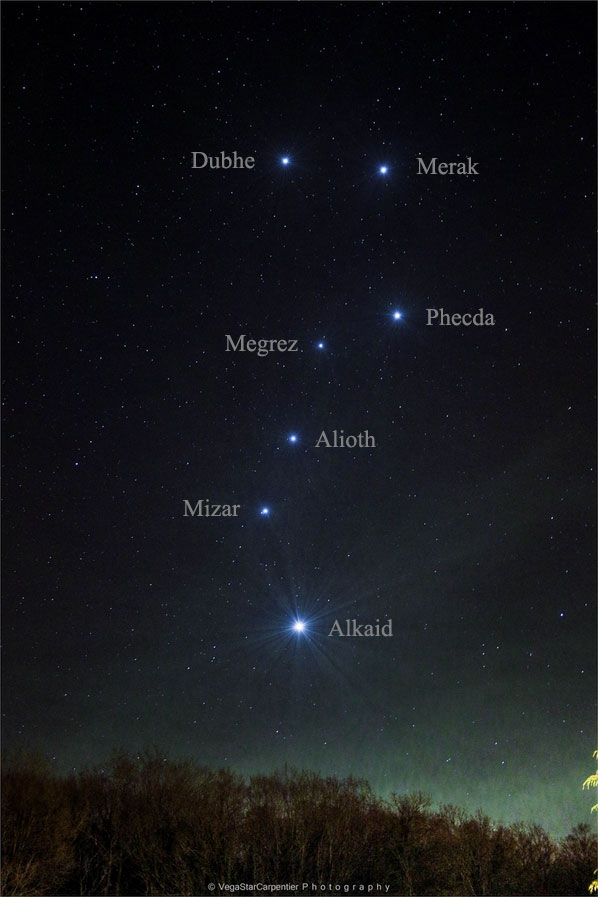The Big Dipper is an old friend to most of us. Poetically, it is spring itself, the season of renewal. Just go outside in early evening, and you’ll see stars shaped in a dipper pattern high in the northeastern sky.
Looming large in the night sky, the Big Dipper’s shape is mutating and will appear different in just a few thousand years, but it hasn’t changed a bit since we were kids.
What is the Big Dipper?
Curiously, the Big Dipper is not even a constellation but a so-called asterism, a “noticeable pattern of stars.” It’s a part of the constellation of Ursa Major, also called the Great Bear or Big Bear. “Big” is the correct adjective, since it’s the third largest group of stars in the heavens.
And most of its stars are gravitationally linked. Not simply random line-of-sight alignments like nearly all other constellations, they’re family members forming a large and loose cluster, or association. Of the thousands of such star groups, the Big Dipper is the very nearest star cluster to Earth at just 100 light years. That’s why it appears so large.
The Dipper floats forlornly in a dark desolate region of the sky far from the Milky Way.Hence, the Dipper guides our eyes away from the flat plane of our own galaxy and toward the rest of the universe.
The Dipper’s direction in space offers a crystal-clear window to distant galaxies, unblocked by any foreground dusty gas of our own galaxy. It was where the Hubble Space Telescope stared for 100 unblinking hours to obtain its first-ever deepest look across the cosmos. By the time their incoming images pass the Dipper’s stars on their way to us, the light from all those galaxies has already completed 99.999% of the journey to our eyes. It was the latest news from an era that no longer exists.

Hubble telescope’s famous 1995 deep-field photo capturing thousands of distant galaxies the eye could never see!
How Do I Find the Big Dipper?
For those at latitudes 41 degrees North or farther north, the Big Dipper is circumpolar, or always above the northern horizon.
Unlike the other stars—which either rise in the east and set in the west, or else go around Polaris in a circle—the North Star appears fixed in the northern sky.
You should see the Big Dipper ascending in early evening high in the northeastern sky. It’s easy to pick out as it really is dipper-shaped, made of seven bright stars.
As the Big Dipper is part of Ursa Major (the Big Bear), some people say that the Dipper makes up the Bear’s tail and hindquarters.
How Do I Find the North Star?
But its greatest claim to fame remains its ability to guide the beginner to the North Star, Polaris.
- Locate the two outermost stars at the end of the Big Dipper’s bowl. We call them the “pointers” because they point straight to the Polaris.
- Just draw a straight line from the higher pointer star to the lower pointer star and then keep drawing in a straight line down to a solitary star of their same brightness: Polaris (which is part of the Little Dipper).

Using the Big Dipper and Polaris will help you find the direction north far more accurately than a compass. If you are facing Polaris, you are facing north. If you turn the opposite direction from Polaris, you are facing south. It’s that simple.
Try it!
For those interested: The second star of the Dipper’s handle is the sky’s most famous double star: Mizar and Alcor. The ability to discern this “horse and rider” was an old Arabic test of keen eyesight. Either Alcor has brightened over the centuries or else the Arabs had vision problems, because away from city lights the pair is easy to see.

Credit: VegaStarCarpentier/NASA
With all that, it’s a pleasure merely to gaze at the Dipper the way you did that night long ago, before you knew such facts. Such a dependable and lasting friend is worthy of a springtime salute.












